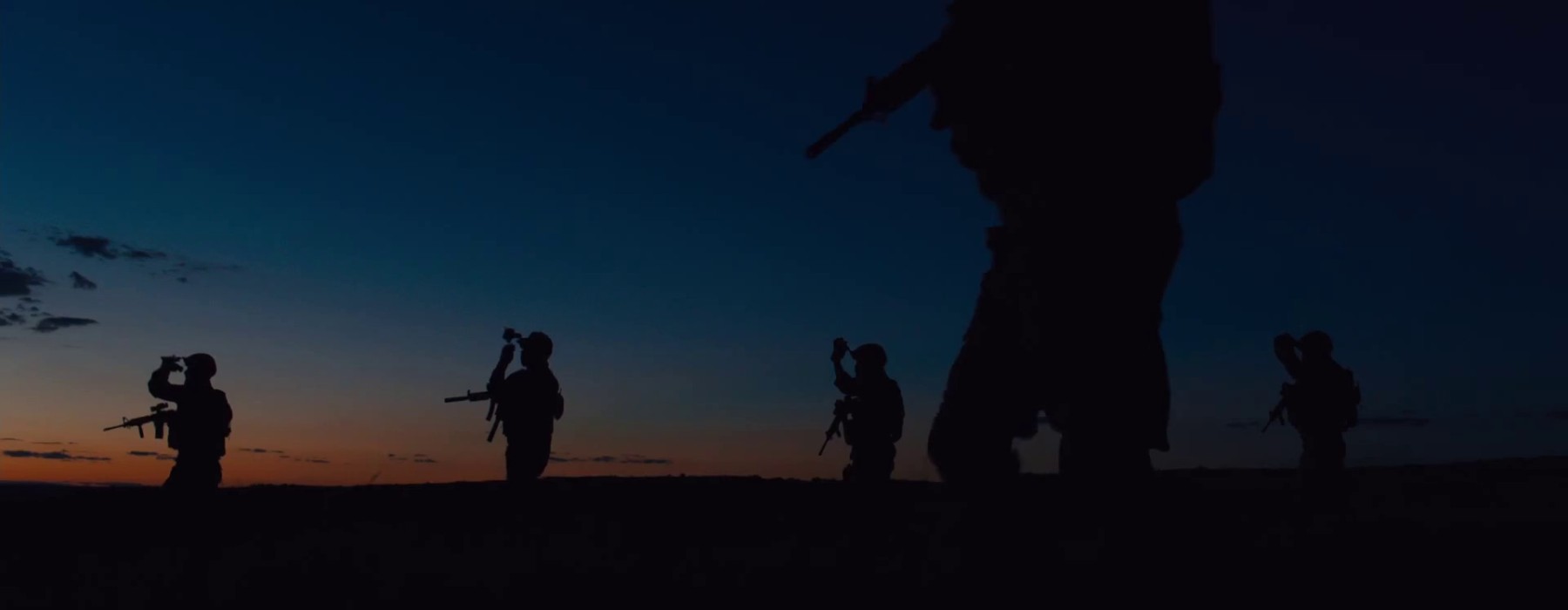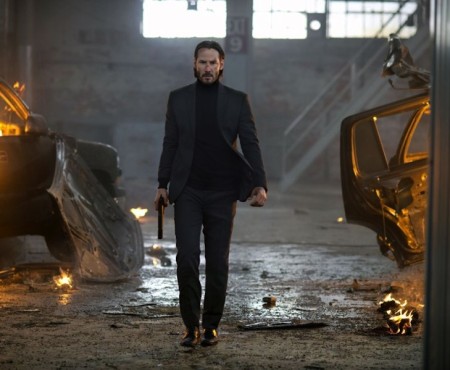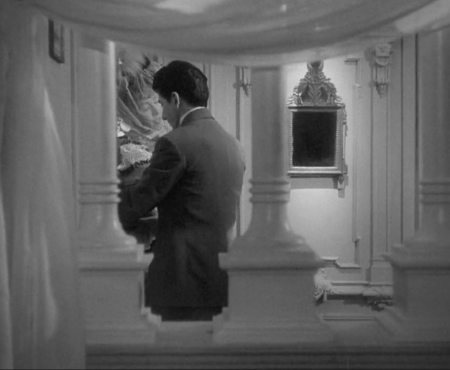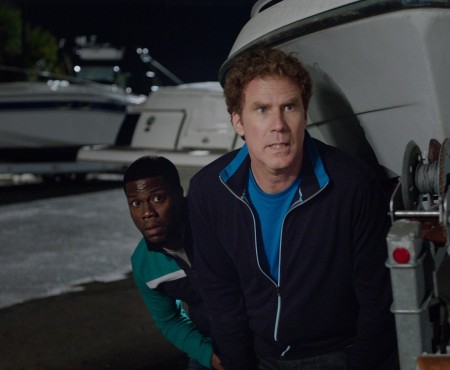25) Shaun the Sheep Movie
This latest stop-motion wonderment from Aardman Animations is more than just one of the year’s most visually inventive films. On one level, it’s a coming-of-age tale of sorts; much humor is also mined from the contrast between city and country. At heart, though, Shaun the Sheep Movie is about characters breaking out of their comfort zones and opening themselves up to the world’s vast possibilities. Sometimes home truly is where the heart is—but the film earns this conclusion in ways that are as sneakily profound as they are consistently delightful. — Kenji Fujishima
24) Eden
For every Daft Punk, there are 50 hopefuls with turntables and samplers who couldn’t hack it. Mia Hansen-Løve’s brother Sven was just one of these also-rans, and his slow, difficult acceptance that not everyone blows up big forms the basis of this elegiac, mournful drama. Paul (Félix de Givry) is losing his edge; he’s getting old, and can’t afford to stay out every night screwing up his relationships with women and getting annihilated. The film cycles through fragments of time like the tracks of an expertly curated DJ set, shifting seamlessly from ecstasy (occasionally literally) to melancholy. — Charles Bramesco
23) The Forbidden Room
An oneiric swirl of fever dreams, half-remembered childhood terrors, forgotten silent cinema, and tall tales, Guy Maddin and Evan Johnson’s film can only be written about with metaphors and abstractions. It narratively curls back into itself like a fractal, nesting stories within stories within stories within stories. Like a strong acid trip, The Forbidden Room adheres to a delirious anti-logic, and also like an acid trip, all the audience can hope to do is hang on for dear life. Funny, frightening, bewildering, and unforgettable, the film wriggles into the crannies of the human id and treats them like experimental performance spaces. — Charles Bramesco
22) Heart of a Dog
Long a venerable avant-garde performance artist and musician, Laurie Anderson finally lends her gifts to cinema with this distinctive, poignant documentary. Mixing prose voiceover, sketches, and amorphous imagery, Heart of a Dog is a hybrid of sorts–part Buddhism-inspired tone poem and part ode to her late dog, Lola. Playing on the symbiotic flip sides of emotion–joy and grief–Anderson conjures a dreamy kaleidoscope of pleasure, fear, paranoia, and deep-seated, post-9/11 national scars. Anderson delicately balances moments of despair with footage of absurd delights, such as her pooch Lola playing the piano at a fundraising benefit. This layered, singular portrait not only delves into the world as seen through a dog’s mind’s eye, but parallels it with humanity’s behavioral impulses and coping mechanisms. — Nick McCarthy
21) The Duke of Burgundy
Like an arthouse Fifty Shades of Grey but superior under every conceivable vector of criticism, Peter Strickland’s erotic psychodrama evinces a nuanced understanding of the emotional conditions that precipitate something as complex as BDSM roleplay. Relationships require sacrifice and compromise, especially when the refusal to urinate into one party’s mouth would be a dealbreaker for the other. As powerful a depiction of patience, devotion, and commitment as any found at the movies this year, resolute formalist Strickland conjures feeling and ambience from streams, the air, the sound of tiny wingbeats, and on one thrilling occasion, nothingness. — Charles Bramesco
20) Mustang
Organically synthesizing the tradition of arranged marriage with escape narratives, Mustang presents a salient portrait of disconnect between Turkish generations. Due to perceived frivolity in a small town in Turkey, five orphaned sisters are forced into nuptials by their grandmother and uncle one by one. Director Deniz Gamze Ergüven’s mood piece confronts the psychological ramifications of rigidly enforced customs; as the girls’ freedoms dwindle and they face incremental imprisonment, they exhibit rebellion along with sisterhood. The young actresses imbue their characters with a collaborative authenticity as they drift into ennui and, worse, realize their dreams are trapped within institutional cages. Essentially, Mustang is a story about youth—as it’s explored and as it’s robbed. — Nick McCarthy
19) Horse Money
Pedro Costa’s sequel of sorts to Colossal Youth reunites him with his muse, Cape Verdean migrant Ventura, whom the director plunges into the noir-lit purgatory of a Lisbon military hospital that seems to exist outside of time. A frightening interrogation of political history—best evidenced in the celebrated elevator scene, in which Ventura is psychically menaced by a creepy, phantom soldier—Horse Money is also an uncanny formal work about memory, evoking a crumbling space between past and present like few other recent films. It’s a beautiful nightmare, and in Ventura’ pivotal, defiant gesture, maybe even a hopeful one. — Luke Goodsell
18) Hard to be a God
This movie is shit. That is not an artistic evaluation; it is an objective description. It’s also piss and blood and snot and mud. Lots of mud. Director Aleksei German’s decade-long labor of misery has resulted in an astonishingly immersive medieval world, one whose senseless brutality and pervasive ugliness makes Game of Thrones look like Disneyland. The viewer does not observe all this from one side of a proscenium, but in the midst of the action, as the camera seamlessly ducks and jostles around the various poor players. Good “world building” is often valued in genre work, but this is beyond that; this is transportation. — Dan Schindel
17) Creed
Sylvester Stallone’s performance in Creed is certainly worthy of all the praise: He brings a deeply affecting world-weariness and awareness of mortality to his iconic Rocky Balboa. But Stallone’s triumph might not have been possible without Michael B. Jordan’s reserves of raw fervor to play against. And supporting these two great performances is Ryan Coogler’s touching screenplay and inspired direction; Fruitvale Station barely hinted at the muscular filmmaking and generosity of spirit shown here. Here is a franchise revival done right: with wisdom, grace, and passion—all of those qualities especially evident in its final scene, a rehash of Rocky’s famous run up the Philadelphia Museum of Art steps, but given a poignant autumnal twist. — Kenji Fujishima
16) Arabian Nights
Arabian Nights is inspired by the structure of the eponymous Middle Eastern folk tales but re-imagined as a modern story about the Portuguese’s struggle with a crumbling economy, and it may come to be considered the definitive film about the global financial crisis. The omnibus—alternately a documentary, mockumentary, heartbreaking drama, absurdist comedy, and everything else in between—is a transcendent work of grand ambition that painfully feels the plight of those living in poverty. Gomes has again proven himself to be one of the most exciting, inventive filmmakers working today. — Amir Soltani
15) Phoenix
It’s appropriate that director Christian Petzold’s latest film is titled Phoenix, since it’s about how people (both individuals and entire countries) cope with historical trauma and rise again. Long-time Petzold collaborator Nina Hoss delivers the best performance of the year as a disfigured concentration camp survivor searching for her husband, whom she suspects betrayed her to the Nazis. Her face has been reconstructed, but she’s still unrecognizable; after war, the film asks, can we ever be the same again? Who is to blame? Does it really matter? It’s a survivor story with shades of Alfred Hitchcock’s Vertigo, and the final scene may be the most beautifully haunting sequence of the year. — Andrew Johnson
14) Inside Out
From Finding Nemo to Toy Story, the melancholy of coming of age has been at the heart of many Pixar films. The distinctive Inside Out follows this tradition with a disarming story, set inside the mind of Riley, an 11-year-old girl who struggles to cope with her move to a new city. The collective quests of her five main, personified emotions (Joy, Sadness, Disgust, Anger, and Fear) take us through a splendid design of the human mind, informed both by the science of psychology and the studio’s astonishing imagination. Inside Out is not only a tear-jerking trip down the memory lane of childhood, but also a compassionate appreciation of human psychology that gently embraces the shared purpose of individual emotions. — Tomris Laffly
13) Anomalisa
Leave it to Charlie Kaufman to make stop-motion animation eminently depressing. Yet Kaufman and his cohort, Duke Johnson, somehow manage to find tender magic amid unrelenting despondency. Anomalisa isn’t a joyful film by any stretch of the means; rather, it’s a grim vision of disconnected adulthood presented through puppetry and artifice, and a portrait of an emotionally crippled man (David Thewlis) who lives in a world populated by people whose humanity he scarcely regards, and who all sound like Tom Noonan. But Kaufman and Johnson can’t help coaxing something spellbinding out of their chosen medium, even during the movie’s abundant moments of biting, self-deprecating cynicism. — Andrew Crump
12) Clouds of Sils Maria
What happens to older generations when the young arrive to take over their positions? That depends entirely on how much the former is willing to butt heads with the latter. Olivier Assayas’ Clouds of Sils Maria pairs Juliette Binoche, one of the greatest actresses of her time, with Kristen Stewart, one of the most ridiculed actresses of her time; to the shock of all, Stewart, playing the long-suffering twentysomething assistant to Binoche’s celebrated but imperious screen acting legend, turns out to be the film’s greatest treasure, even next to Binoche’s superb work and Assayas’ thoughtful, contemplative filmmaking. The film’s performances are as much a pleasure as its many peculiarities. — Andrew Crump
11) Spotlight
In Tom McCarthy’s meticulously assembled, unassuming Boston-based drama, a group of Boston Globe journalists follow a handful of leads to unveil the monstrous systemic sexual abuse of children within the Catholic Church. Spotlight is a refined slow-burn, featuring a rare ensemble operating in synch and as one at all times, navigating a tightly constructed script about the painstaking, unglamorous process of journalistic research. For an even-keeled film with a purposefully understated nature, the end result causes much heartache—even outrage—with McCarthy’s modest but sure-handed directorial style emphasizing just the right amount of suspense and anger at the right time. — Tomris Laffly



































4 thoughts on “The 50 Best Movies of 2015”
Pingback: Best Films of 2015 lists (updating) | Under the Skin
Great list guys.
Pingback: From Our Members’ Desks (Jan. 19, 2016) – Online Film Critics Society
Pingback: In Praise of Roger Deakins | WFUmediaphiles